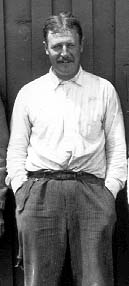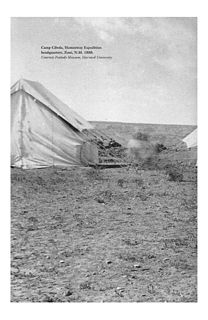This article needs editing for compliance with Wikipedia's Manual of Style.(March 2021) |

Steven A. LeBlanc (born 1943) is an American archaeologist and former director of collections at the Peabody Museum of Archaeology and Ethnology at Harvard University's Peabody Museum. [1]
Contents
He is the author a number of books about Southwest archeology and prehistoric warfare. His books have run counter to the once widespread notion of peaceful preliterate cultures. [2] However, he continues that tradition in asserting that all preliterate cultures were similar, with the same cultural responses to being stressed.
| The primary cause of war, as LeBlanc sees it, is ecological imbalance; humans compete for finite amounts of food when population outstrips supply or when the land becomes overgrazed and deforested. Conflict flash points-the Middle East and the Balkans, for instance-have a "long history of ecological stress and degradation." LeBlanc argues that ecological balance was rarely the norm, even in pockets of paradise. One might expect, for example, that the inhabitants of Tikopia, a remote island in the South Pacific, would make fine stewards of their natural environs. But even they repeated the historical theme: "A few people occupy the...land, they exterminate many species, they heavily modify the landscape, and their numbers grow. They never remain in anything approaching ecological balance." And the impulse to conduct warfare goes all the way back to our primate precursors. "Our closest ape relatives," he says, have always engaged in ferocious acts of warfare, chillingly reminiscent of human conflict (as Jane Goodall observed among chimpanzees in the jungles of Tanzania in the 1960s). As humans evolved, violence was the norm; the "fantasy," as LeBlanc characterizes it, of the noble savage, is a distinctly modern invention (first advanced by Jean-Jacques Rousseau and his followers in the 18th century). Skeletal remains of humans from sites all over the world reflect horrific violence. At burial locations of the ancient Aborigines of Australia-hunter-gatherers with no permanent settlements-we find "evidence of violent deaths and even massacres, and specialized weapons useful only for warfare." The replacement of foraging by farming, a development that occurred sometime around 10,000 B.C. in what is now, ironically enough, Iraq, placed a great many stresses on the environment. As populations began to rise, natural resources were increasingly exploited. Thus warfare, in the age of emergent agriculture, "became more common and deadly than forager warfare." Though LeBlanc's arguments are inevitably grounded in pessimism, he does not believe that humans are genetically precluded from peaceful coexistence. "As long as resource scarcities continue in many parts of the world," he writes, "I expect conflict based on competition over resources to continue, even if it is sometimes disguised as ideological. This does not doom us to a future of war any more than our past dooms us to a future of heart attacks." But "if we do not strive to understand what we have done in the past and why," he says, "it will only make it harder to get it right in the future." |
Azar Gat expresses similar arguments in the first chapters of War in Human Civilization (Oxford UP, 2006). [4]












